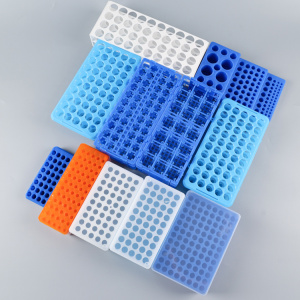Influenza Rapid Test Kits
Convenient household flu testing kit have been widely used at the grassroots level. This article mainly introduces the classification of influenza A and B Rapid Test Kits and the necessity of using rapid flu test kit.

At present, four types of influenza viruses have been found: A, B, C, and D. Influenza A and B viruses are more common clinically. Among them, influenza A virus is the most likely to mutate and is highly infectious, which can cause influenza outbreaks. It is the main pathogen of human influenza. The patients have obvious symptoms and serious illness. Influenza B virus mutates less, and patients are relatively mildly ill. If you find symptoms of cold and fever, you should go to the hospital in time for influenza A and B virus antigen testing. If the test result is positive, you can be diagnosed with influenza.
Influenza etiological examination
It mainly includes virus isolation, virus antigen, antibody and nucleic acid detection, etc. Virus isolation is the gold standard for diagnosing this disease. There are a variety of testing methods, each with varying sensitivity and specificity.
1. Molecular examination. Also called nucleic acid detection. By detecting the nucleic acid of influenza virus to determine whether there is influenza virus in the body, including conventional PCR detection and rapid molecular detection, the sensitivity can reach more than 90%.
2. Rapid antigen detection. There are two main types of virus antigen detection methods, namely direct fluorescent antibody detection and immunocolloidal gold chromatography. The direct fluorescent antibody detection method is to use fluorescent dyes to label antibody molecules, and then combine with specific antigens in the specimen, and observe the viral antigens and their locations in cells with a fluorescence microscope. The immunocolloidal gold chromatography technology is easy to operate, does not require any special equipment, and the detection results are intuitive, which is convenient for grassroots units and on-site use.
3. Serum antibody detection. The main purpose is to detect the level of antibodies in the serum of patients, that is, to detect the antibodies in the serum with known influenza virus antigens. However, when the antibody has not been produced at the initial stage of infection or is lower than the detection concentration, the serum antibody test cannot be detected.
4. Virus isolation and culture identification. Virus isolation is one of the traditional methods for influenza virus detection, including chicken embryo inoculation and cell culture. Motor canine kidney cells (MDCK) are currently used to isolate influenza virus as the host system. The detection time for influenza virus generally takes 4 to 5 days.
The above tests are effective in identifying pathogens, but currently no method for detecting influenza can achieve 100%. Therefore, the diagnosis of influenza is often based on clinical symptoms, medical history and test results, and then active treatment is carried out according to the diagnosis results.

Influenza Precautions
Influenza virus is highly variable, so it is prone to a pandemic, and the human body has very low resistance to the virus.
1.Influenza vaccination is the first barrier of prevention. Through vaccination, protective antibodies against influenza can be obtained. Mainly for the prevention of known types of influenza. People who need to be vaccinated against influenza include the elderly, infants, medical staff, and patients with underlying diseases (such as hypertension, diabetes, kidney disease, etc.). It is recommended to be vaccinated before the influenza season.
2.If the body cannot tolerate the vaccine or is allergic to the vaccine, and has close contact with influenza patients and has a history of exposure, oral drug oseltamivir can be used for prevention, and drug prevention can reach 70% to 90%.
3.Take reasonable rest, exercise appropriately, pay attention to hand hygiene, wear masks when going out, and minimize contact with influenza patients.
4.If you have symptoms, seek medical attention and treatment as soon as possible to reduce the occurrence of flu complications, and try to avoid activities in crowded places to avoid infecting others.
5.In major public places, such as shopping malls, parks, schools and other places with large traffic, regular and comprehensive disinfection measures should be taken to reduce the concentration of viruses in the air.
In short, influenza is extremely contagious.
Although there are effective clinical treatment plans and detection methods, active prevention, improving one's immunity, and reducing the infection rate are the primary criteria to effectively protect one's own health. Especially the elderly should pay special attention to the fact that influenza virus can cause a systemic inflammatory response to a certain extent. If it induces complications (such as diabetes, cardiopulmonary diseases, etc.) in elderly patients, it will greatly increase the difficulty of treatment, prolong the treatment period, and increase the medical burden of patients.



